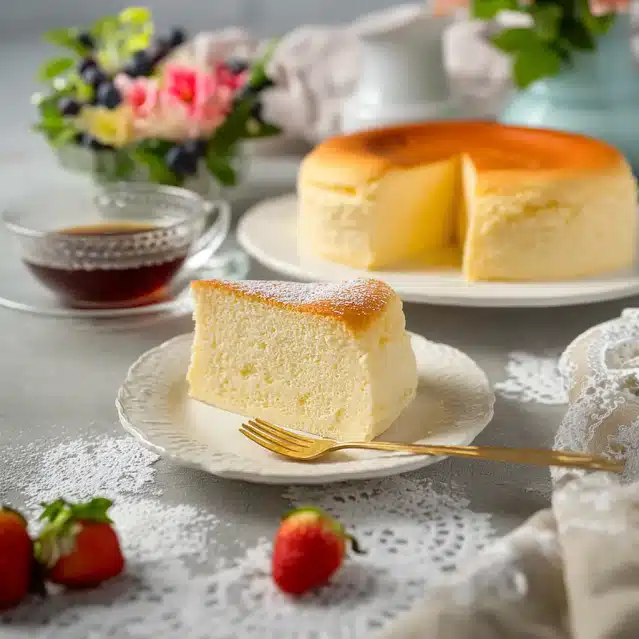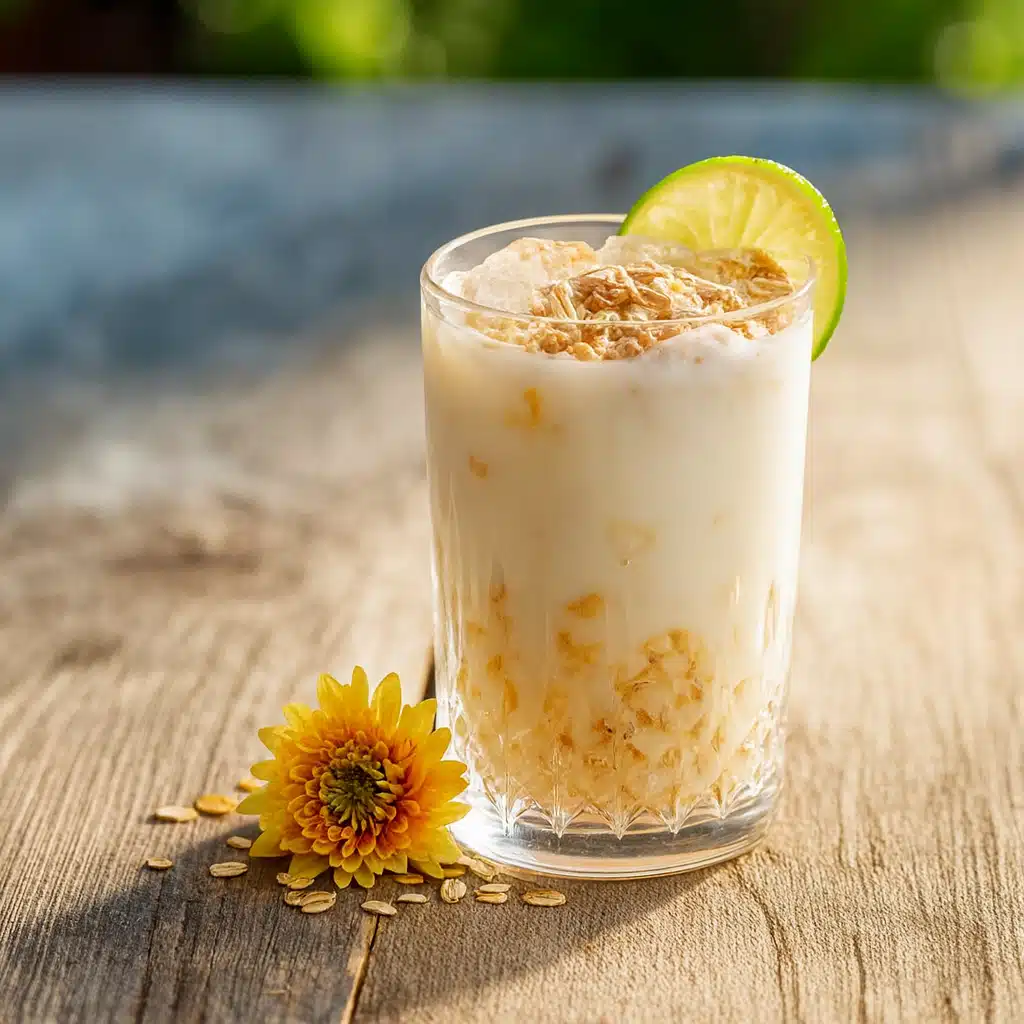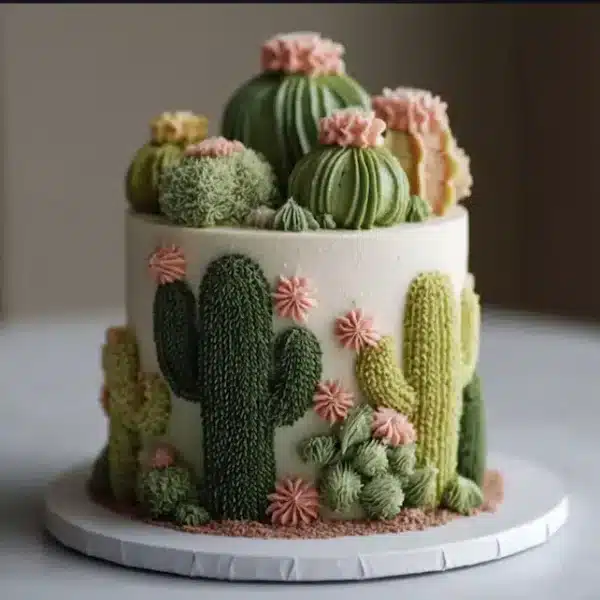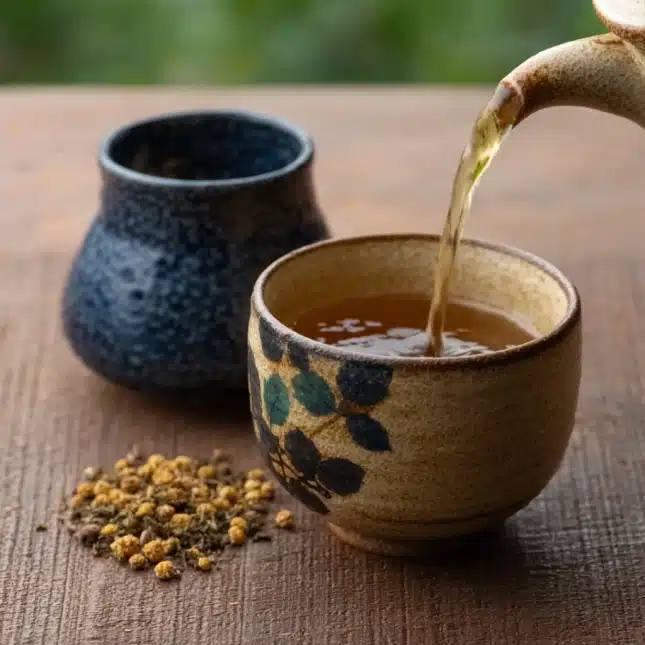Making Japanese cheesecake feels magical once you get it right. Unlike dense New York–style versions, this cake is soft, jiggly, and melts in your mouth. It combines the richness of cheesecake with the lightness of chiffon cake. In this article, I’ll walk you through every step so you can create a cheesecake that rises evenly, stays fluffy, and never cracks. From my kitchen to yours, here’s how you can bake the perfect Japanese cotton cheesecake.
Table of Contents
The Story and Love Behind Japanese Cheesecake
Hi friends. After three years of trial and error, I finally discovered how to bake a Japanese cheesecake that doesn’t collapse or crack. This cake, often called Japanese cotton cheesecake or soufflé cheesecake, holds a special place in my heart. It reminds me of afternoons baking with my grandma Eleanor, where I first learned that baking isn’t just about food. It’s about warmth, sharing, and creating memories.
During the 2020 lockdown, baking became my therapy. In between homeschooling my kids and walking Buddy, our golden retriever, I turned to the kitchen for peace. That’s when I fell in love with the process of perfecting this cake. Each attempt taught me something new. Eventually, I created a method that gave me tall, fluffy cheesecakes every time. No sunken centers, no cracks, and just the right jiggle.
This cake is lighter than traditional cheesecake. It’s creamy without being heavy and sweet without being overwhelming. It works for birthdays, holidays, or a cozy afternoon when you crave something comforting. Whether served warm or chilled, each slice feels like biting into a soft cloud.
If you’ve tried and failed before, you’re not alone. But with the tips ahead, you’ll finally get it right. Let’s move on to the baking techniques that guarantee a fluffy, picture-perfect Japanese cheesecake.
Foolproof Techniques for Fluffy Texture
Print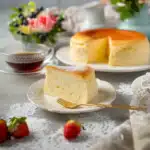
The Ultimate Japanese Cheesecake Recipe
- Total Time: 90 minutes
- Yield: 6–8 servings 1x
- Diet: Vegetarian
Description
This Japanese cheesecake is jiggly, fluffy, and foolproof. It’s lighter than traditional cheesecake but packed with soft creamy texture that melts in your mouth.
Ingredients
5 egg whites
1/4 tsp cream of tartar
1/4 cup (50g) fine sugar
5 egg yolks
8 oz cream cheese
1/4 cup (55g) butter
1/2 cup (125ml) milk
1/4 cup (50g) fine sugar
2 tbsp (15g) corn starch
1/4 cup (34g) flour (or Mochiko for gluten-free)
Optional: vanilla, lemon juice, toppings like strawberries or powdered sugar
Instructions
1. Separate eggs. Place yolks in a bowl, whites in a mixer bowl.
2. Melt butter, cream cheese, and sugar over low heat. Mix until smooth.
3. Add yolks to the warm batter. Stir gently.
4. Add cornstarch and flour. Mix until smooth.
5. Add milk and optional vanilla or lemon. Mix until liquid.
6. Beat egg whites to stiff peaks, adding sugar gradually.
7. Fold meringue into batter in three stages.
8. Line baking pan with parchment. Preheat oven to 330°F.
9. Pour batter into pan. Place in a water bath.
10. Bake 25 min at 330°F. Lower heat to 250°F. Bake 45 min more.
11. Let rest 10 min in oven. Remove and flip twice to serve.
Notes
To prevent cracks, bake slowly and do not overmix.
Use sweet rice flour for a gluten-free version.
Chill for denser texture or serve warm for full jiggle.
- Prep Time: 20 minutes
- Cook Time: 70 minutes
- Category: Dessert
- Method: Baking
- Cuisine: Japanese
Nutrition
- Serving Size: 1 slice
- Calories: 210
- Sugar: 12g
- Sodium: 85mg
- Fat: 14g
- Saturated Fat: 8g
- Unsaturated Fat: 5g
- Trans Fat: 0g
- Carbohydrates: 15g
- Fiber: 0g
- Protein: 5g
- Cholesterol: 95mg
Whip the Meringue Correctly
Start by separating five eggs. Place the whites in a clean, dry mixing bowl. Add a pinch of cream of tartar or a few drops of lemon juice to stabilize the foam. Begin mixing on medium speed until the egg whites turn foamy, then slowly increase the speed. As the mixture becomes whiter and denser, gradually add the sugar.
Your goal is stiff peaks that are glossy and firm. Lift the whisk and check. If the peaks hold their shape without drooping, they’re ready. This step is critical because the meringue gives the cake its signature height and airiness. Over-beaten meringue will break down when folded. Under-beaten meringue won’t hold the structure.
Mix and Fold With Patience
While the meringue is whipping, melt cream cheese, butter, and sugar over low heat until smooth. Let the mixture cool slightly, then whisk in the egg yolks. Sift in the cornstarch and flour. Stir gently until you have a lump-free batter. Add milk to loosen the texture. The batter should feel creamy and pourable.
Now fold the meringue into the batter in three stages. Use a wide spatula and scoop from the bottom up, rotating the bowl as you go. This folding technique blends the mixtures without deflating the bubbles you worked so hard to create. Do not stir. Stirring will ruin the structure and make the cake flat and dense.
Pour the smooth batter into a lined pan. Use parchment paper on the sides and bottom. Place the pan into a larger pan filled with hot water. This water bath creates gentle steam that prevents cracking and promotes even baking. Bake at 330°F for 25 minutes. Then lower the oven to around 250°F and continue baking for another 45 minutes.
Let the cake rest in the oven for 10 minutes before removing it. This helps it settle gradually and reduces the risk of deflation. When you pull it out, you’ll see it rise tall with a golden top and soft jiggle. In the next part, we’ll explore each ingredient and why it matters.
Ingredient Secrets and Substitutions
Why Each Ingredient Matters
Japanese cheesecake may look delicate, but each ingredient plays a strong role in creating its light and fluffy texture. Start with the eggs. They are the base of the structure. The yolks add richness and color, while the whites, once whipped, provide lift and softness. Always use fresh eggs at room temperature for the best volume.
Cream cheese is what sets this cheesecake apart from a chiffon cake. Use full-fat cream cheese to ensure a smooth and creamy result. Low-fat versions can make the batter watery and reduce stability. Butter adds depth and flavor, helping balance the tanginess of the cream cheese. Make sure it’s unsalted so you can control the overall taste.
Milk gives the batter a pourable consistency without thinning it too much. Use whole milk for a richer result. The small amount of sugar adds sweetness without making it too heavy. Japanese cheesecake is meant to be light and barely sweet, letting you enjoy the texture more than the sugar rush.
Cornstarch is one of the magic ingredients. It softens the crumb and helps bind the cake gently. It also plays a role in making the final texture smooth and silky. The flour adds just enough structure to support the rise. If you prefer a gluten-free option, you can substitute sweet rice flour or Mochiko.
Customizing Flavors the Right Way
You can keep the cake plain or add subtle flavor touches. Vanilla extract is a classic choice. A spoonful of lemon juice or zest gives it brightness without making it sour. If you want to experiment, matcha powder or cocoa can be added to the egg yolk batter before folding in the meringue. Two tablespoons is usually enough to create a light flavor variation without overwhelming the base.
Toppings can also change the experience. You can dust the top with powdered sugar, add sliced strawberries, or drizzle a little honey once the cake cools. Just remember, any extra ingredients should never go into the meringue or affect the batter’s balance. The fluffiness always comes first.
Now that we’ve broken down the ingredients and their role, the final part will guide you through serving tips and answer the most common questions people have about this unique dessert.
Serving Your Japanese Cheesecake Just Right
Once your Japanese cheesecake is baked and has rested, handling it carefully makes all the difference. Allow the cake to rest inside the oven with the door slightly ajar for approximately 10 minutes to cool gradually. Then remove it using oven mitts and let it rest at room temperature for another 10 to 15 minutes before unmolding.
To keep the surface smooth, place a sheet of parchment paper over the top, set a plate on it, and flip the cake gently. Remove the baking pan and the bottom parchment. Then flip it again onto a serving plate, so the smooth top faces up. This flipping method helps maintain its delicate structure and keeps the top flawless.
Japanese cheesecake tastes best when served slightly warm. It will still jiggle and feel incredibly soft. If you chill it in the fridge, it becomes denser and loses some of the bounce, but many people still love it that way. You can dust the top with powdered sugar or add fruit just before serving.
For special touches, try matcha powder or a drizzle of honey. Keep toppings light so they don’t weigh down the soft cake. Slice with a warm knife for smooth, clean cuts. Store any leftovers in an airtight container in the refrigerator for up to three days.
Conclusion: Why Japanese Cheesecake Belongs in Your Kitchen
Japanese cheesecake is more than a dessert. It’s an experience that brings joy from the first bite to the last. Light, airy, and softly sweet, it’s the perfect treat when you want something that feels both indulgent and delicate. After learning the folding techniques, mastering your meringue, and understanding how each ingredient contributes to the texture, you’re now fully equipped to bake a flawless Japanese cheesecake.
Whether you enjoy it warm and jiggly from the oven or chilled with a dusting of powdered sugar, this cake never disappoints. With just a few ingredients and a little patience, you can create a dessert that’s impressive but still simple. Japanese cheesecake is the kind of recipe you’ll want to pass down or bake again and again for special moments.
If you’ve been intimidated to try it before, now is the time. You’ve got every step broken down, along with helpful tips and answers to the most common questions. Trust the process, follow the guide, and your next Japanese cheesecake will be your best yet.
For more behind-the-scenes baking tips, personal stories, and step-by-step videos, follow me on Facebook where I share updates from my kitchen. If you’re searching for visual inspiration or want to save this Japanese cheesecake recipe for later, explore my curated boards on Pinterest. You’ll find easy dessert ideas, comfort food favorites, and family-approved sweets.
FAQ
What makes a Japanese cheesecake different?
Japanese cheesecake is lighter and fluffier than traditional cheesecakes. It uses whipped egg whites to create a soufflé-like rise and texture. It’s not as rich, making it easier to enjoy more than one slice.
What are the ingredients in Japanese cheesecake?
The main ingredients are egg yolks, egg whites, cream cheese, butter, milk, sugar, cornstarch, and flour. Some recipes also use flavorings like vanilla or lemon. The combination of cream cheese and meringue is what gives it the distinct texture.
Does Costco sell Japanese cheesecake?
Availability can vary by location and season. Some Costco stores, especially in Asia, do carry Japanese cheesecakes or similar soft cheesecakes. In North America, it may not be a regular item. You can always check with your local store.
Is Japanese cheesecake healthier than regular cheesecake?
It can be. Japanese cheesecake uses less cream cheese and sugar, and the texture is airier, which often means fewer calories per slice. However, it still contains fat and sugar, so portion control is important if you are watching your intake.

